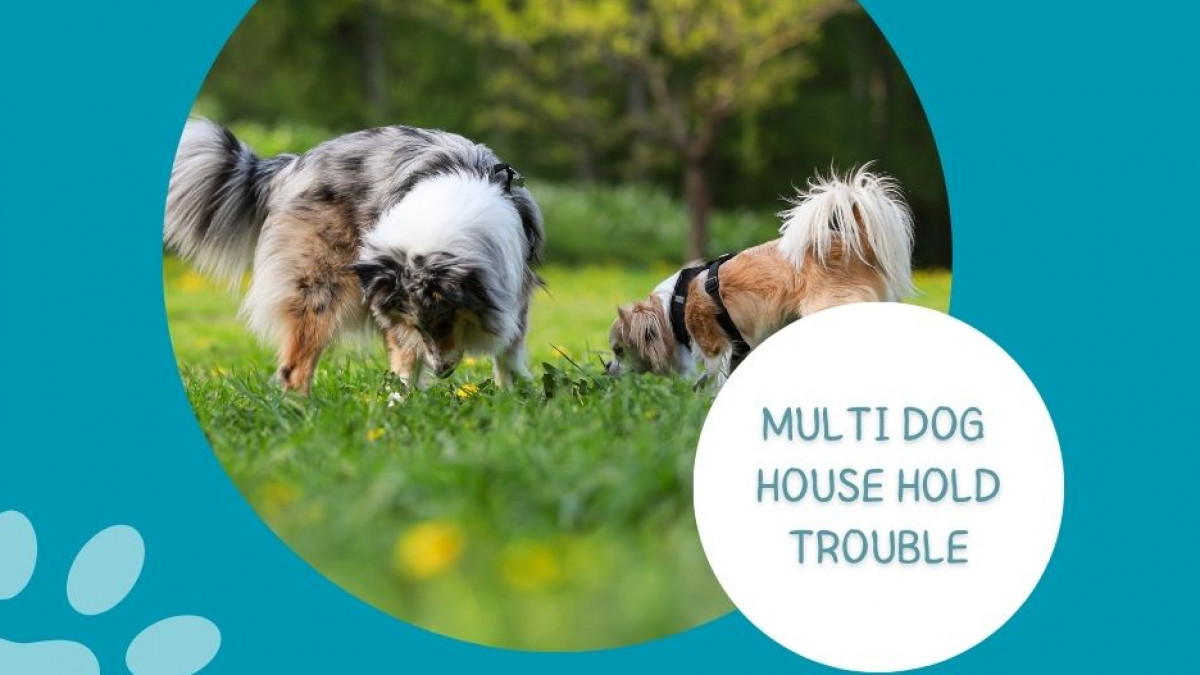Positive Dog Training & Behaviour Blog | Walkabout Canine Consulting
Unleashing your dogs potential, one concept at a time
Dog Integrations: Tips

I brought a new dog home to my multi dog household and they are not getting along? here are some considerations.
Introducing a new dog into a multi-dog household can be both exciting and challenging. While some dogs may seamlessly integrate, others may require more time and effort to adjust. If you find yourself facing conflicts or tensions amoung your furry companions, it's essential to approach the situation with patience, understanding, and the right strategies.
First and foremost, ensure that all dogs are in good health by seeking veterinary care if needed. Additionally, investing in one-on-one VIP dog training sessions can provide tailored guidance and support tailored to your specific situation.
The success of integrating a new dog depends on various factors, including the age and personality of each dog. While some may adapt quickly, others may need a couple of weeks to settle into the new dynamic. During this adjustment period, it's crucial to observe their behaviours and proceed accordingly.
It's not uncommon to witness avoidance behaviours initially, and it's essential to respect their need for space. Establishing a predictable routine regarding feeding, sleeping spots, and daily activities can help provide a sense of security for all dogs involved. Leveraging the existing routine with your other dogs can aid in the transition process.
If conflicts arise or if you're struggling with integration, creating distance between the dogs can help alleviate stress. Utilizing gates, crates, or designated safe zones for each dog allows them to acclimate gradually while minimizing tensions.
While dog pack dynamics are fluid, it's essential to manage expectations regarding hierarchy. Unlike in related or raised-together groups, establishing a hierarchy may not be relevant or controllable in a multi-dog household. Instead, focus on fostering positive relationships and reducing conflicts through environmental management and patience.
Understanding that not all dogs will be immediately compatible is crucial. Similar to human families, relationships among dogs may take time to develop and evolve positively. Stressors, both apparent and hidden, can impact their interactions, requiring patience and proactive management.
To facilitate a smooth transition and promote harmony among your furry companions, consider implementing the following steps:
- Create designated calm spaces for each dog to rest and feel safe.
- Play soothing music or provide white noise to reduce stress.
- Prioritize adequate rest for all dogs, as sleep significantly impacts their well-being.
- Introduce passive calming activities and enrichment toys to alleviate stress and boredom.
- Take each dog on separate walks or outings to prevent conflicts.
- Establish separate feeding areas to avoid tension during meal times.
- Incorporate fun training sessions within sight of each dog to foster positive associations.
- Engage in daily play sessions with each dog to strengthen bonds and promote positive emotions.
- Maintain a positive and calm demeanor during interactions, avoiding reprimands and instead redirecting behavior positively.
While these steps provide a solid foundation for multi-dog integration, every situation is unique. Consider seeking professional guidance if needed to tailor strategies to your specific circumstances and ensure a successful transition for all involved.
In conclusion, patience, understanding, and proactive management are key to fostering harmonious relationships in a multi-dog household. By prioritizing the well-being and comfort of each dog and implementing appropriate strategies, you can create a happy and peaceful environment for all your furry companions to thrive.
If you're seeking further assistance or guidance in navigating your multi-dog household, don't hesitate to reach out. Together, we can work towards achieving success and harmony in your canine pack.
Categories: : behaviour modification, canine, dog behaviour, dog training, multi dog
 Sylvia Koczerzuk Koczerzuk
Sylvia Koczerzuk Koczerzuk 
